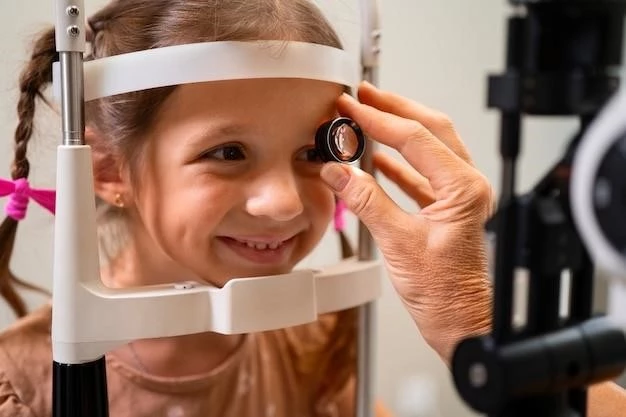Waardenburg Syndrome is a genetic condition involving pigment distribution issues, causing depigmentation patches․ It affects skin, hair, eyes, and can include hearing loss․
What is Waardenburg Syndrome?
Waardenburg Syndrome, an autosomal dominant genetic condition, is characterized by pigment distribution issues affecting the skin, hair, and eyes․ This syndrome often includes congenital hearing loss and can lead to depigmentation patches on the skin, hair, and iris․ Identified by geneticist Petrus Johannes Waardenburg, this rare disease involves an abnormal distribution of melanocytes during embryogenesis․ Individuals with Waardenburg Syndrome may present with unique features such as blue eyes, a white forelock, and hearing impairments․ Types of this syndrome include sensory-neural hearing loss, pigmentary disturbances, and anomalies like synostosis and syndactyly․
What is Waardenburg Syndrome?
Waardenburg Syndrome is a genetic condition that affects the coloring (pigmentation) of skin, hair, and eyes․ It commonly includes hearing loss as well․ Treatment can help manage symptoms․
Genetic Basis of Waardenburg Syndrome
Waardenburg Syndrome is primarily an autosomal dominant genetic condition linked to an abnormal distribution of melanocytes during embryonic development, causing skin, hair, and eye pigmentation issues along with hearing impairment․ It is essential to consult a genetic counselor for a thorough understanding of the inheritance pattern and genetic testing options․
Clinical Features and Symptoms
Waardenburg Syndrome is a genetic disorder characterized by pigmentary disturbances affecting skin, hair, and eyes․ Individuals may also experience congenital hearing loss․ Consultation with a healthcare provider is essential for proper diagnosis and management․
Auditory-Pigmentary Disturbances
Waardenburg Syndrome Type I (WS1) is a subtype characterized by congenital sensorineural hearing loss and pigmentary disturbances affecting the iris, hair, and skin․ Dystopia canthorum, a distinctive feature, involves the lateral displacement of the inner canthi․ Early diagnosis and appropriate management are crucial for individuals with WS1․
Types of Waardenburg Anophthalmia Syndrome
Individuals affected by Waardenburg Anophthalmia Syndrome may exhibit a range of clinical variations, including pigmentary disturbances, congenital hearing loss, and distinctive physical features such as blue eyes and a white forelock․ Proper diagnosis by a healthcare professional is crucial to determine the specific type and appropriate management strategies․
Waardenburg Anophthalmia Syndrome Type I (WS1)
Waardenburg Syndrome Type I (WS1) is a subtype characterized by congenital sensorineural hearing loss and pigmentary disturbances affecting the iris, hair, and skin․ This genetic condition involves an abnormal distribution of melanocytes during embryonic development, leading to depigmentation patches and hearing impairment․ Early diagnosis and medical management are essential for individuals with WS1 to address both the auditory and pigmentary challenges associated with this syndrome․
Diagnosis and Testing
Diagnosing Waardenburg Syndrome involves a thorough evaluation of pigmentary disturbances, hearing loss, and physical features․ Genetic testing can confirm the presence of specific mutations associated with the syndrome․ It is important to consult with a healthcare provider for proper diagnosis and testing recommendations․
Identification of Waardenburg Anophthalmia Syndrome
Diagnosing Waardenburg Anophthalmia Syndrome involves genetic testing to identify specific mutations associated with the condition․ Consultation with a genetic counselor can help in understanding the inheritance pattern and making informed decisions regarding testing and management options․
Treatment Options
When managing Waardenburg Anophthalmia Syndrome, treatment focuses on alleviating symptoms and may involve addressing pigmentary disturbances, hearing loss, or other related complications․ Consulting healthcare specialists is crucial for tailored management strategies․
Management of Symptoms in Waardenburg Syndrome
Managing symptoms of Waardenburg Syndrome involves addressing pigmentary disturbances, hearing loss, and other related issues․ Healthcare professionals can recommend treatments tailored to each individual’s specific needs․ Regular follow-ups and consultations with specialists are important for ongoing care and symptom management․
Understanding the prognosis of Waardenburg Anophthalmia Syndrome is crucial as it can present complications related to hearing loss, pigmentary disturbances, and potentially other systemic issues․ Seeking periodic evaluation and care from healthcare professionals can help manage complications effectively․
Prognosis and Complications
Understanding the prognosis of Waardenburg Anophthalmia Syndrome is crucial as it can present complications related to hearing loss, pigmentary disturbances, and potentially other systemic issues․ Seeking periodic evaluation and care from healthcare professionals can help manage complications effectively․

Current Research and Studies
Stay informed about the latest research on Waardenburg Syndrome, a genetic condition affecting skin, hair, eyes, and hearing․ Medical advancements are constantly evolving to enhance diagnosis and management of this rare syndrome․
Recent Findings on Waardenburg Anophthalmia Syndrome
Stay updated on the latest research concerning Waardenburg Anophthalmia Syndrome, focusing on genetic mutations, unique clinical presentations, and potential treatment advancements․ Keeping informed about recent studies can offer valuable insights into the management and understanding of this rare genetic disorder․

Support and Resources
Explore support groups and resources dedicated to assisting individuals and families affected by Waardenburg Anophthalmia Syndrome․ Accessing reliable information and connecting with others facing similar challenges can provide valuable support and guidance․
Resources for Individuals and Families Affected by Waardenburg Anophthalmia Syndrome
For those impacted by Waardenburg Anophthalmia Syndrome, accessing specialized support groups and resources can offer valuable guidance and a sense of community․ These resources can provide information, advocacy, and emotional support to individuals and families navigating the challenges associated with this rare genetic condition․
